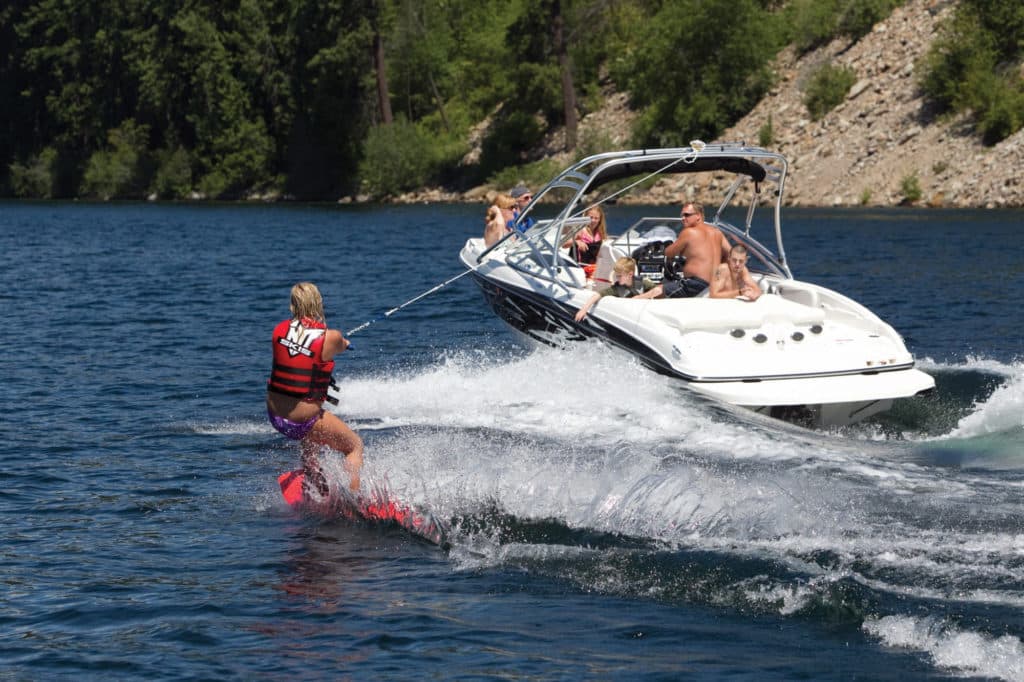
Everyone who has ever bought a boat for family use has envisioned teaching the kids how to water-ski or taking them tubing behind it.
If you buy a specialized tow-sports boat, going skiing, wakeboarding or surfing is a no-brainer. But behind the typical family runabout or center console, you likely won’t have the benefit of a center-mounted tow pylon. And you probably won’t have a built-in ballast system for building big wakes for wake sports. So, here are some boating and driving tips to make water-skiing, wakeboarding or tubing behind your boat a successful endeavor.
Nada Surf
Unless you have a boat with an inboard engine, jet drive or forward-facing sterndrive (currently Volvo Penta’s Forward Drive is the only one on the market), do not attempt to surf behind your boat. Surfing requires getting too close to the transom to be safe for boats with outboard or sterndrive power.
Rope It In
If you’re going to try different tow sports, you will need a selection of towropes. Water-ski ropes are typically 75 feet in length, beginner wakeboard ropes typically run between 65 to 75 feet, and tube ropes should fall between 50 to 60 feet. Most wakeboarders prefer ropes with no stretch, while many water-skiers like ropes with a little bit of stretch. Check that a tube rope’s rating matches the weight capacity of the specific tube it’s towing.
Rope positioning should be different too. Skiers prefer the rope attached to a pylon close to the center of the boat, which helps with carving on slalom courses. Wakeboarders prefer a high tow point (from a tower) to help do airborne tricks. Keep the tow line for the tube tied close to the transom and off a tow eye or low pylon. Tethering a tube from a tower greatly increases the risk of flipping it or sending it aloft.
A Light Touch
When driving for tow sports, the first thing you have to consider is how you handle the throttle. Running and gunning it doesn’t work. When pulling up a skier or boarder, gradually bring the throttle forward so as not to jerk or yank the rope out of their hands. Once on plane, wakeboarders prefer boat speeds between 18 to 22 mph, while slalom water-skiers work with speeds between 25 to 36 mph. That said, first-time boarders or skiers on two skis need slow speeds when the boat is just on plane, typically between 16 to 20 mph.
Once the rider is up, work the throttle with your thumb and index finger and your elbow on an armrest to execute a light touch to find the sweet spot for your rider. You’ll need to make slight adjustments with both the throttle and the wheel to account for the pull on the transom that skiers and boarders make as they cut far out of the wake.
Rider Down
After a rider falls, throttle back to idle before turning to return to him so you don’t swamp the rider with a wake. Approach the rider at idle speed from the downwind side so as not to accidentally drift or be blown on top of him. If the rider is reboarding the boat, always kill the engine before he gets close.








